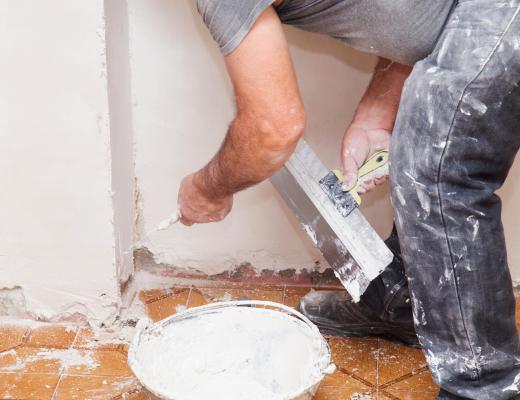Scratch coats are the bottom layer or coating of plaster that is applied to a wall. While still wet, this coat is scratched using a trowel or some type of serrated blade. The creation of a web of surface scratches helps the second coat of plaster to adhere to the scratch coat properly by allowing the overcoat of plaster to enter the scratches and create a bond between the two layers.
The application of scratch coating can be utilized with just about any type of wall, including new construction. The scratch coat can be applied to such diverse wall surfaces as stone, sheetrock and even brick. Once this base coat is applied to the wall, it is allowed to dry slightly. However, the creation of the scratches takes place before the first layer of plaster has a chance to set. This leaves behind a rough surface with tiny indentations that can be filled as the second coat of plaster is administered.

While there are comb-like tools that can be used to make the scratches in the underlying coat, it is more common to make use of a trowel or even a serrated knife to create the series of scratches. The actual task of making scratches in the plastering is not difficult at all. Since the scratch coat is the first layer of plaster on the wall, there is no need to spend a lot of time smoothing the surface before initiating the scratching process. Essentially, the scratch coat simply needs to be relatively smooth, but with small scratches distributed all along the surface of the wall.

Once the scratch coat has been allowed time to set, the finish coat can be applied. While plastering on this top coating, the second layer of plaster will fill in the scratches on the underlying coat. This action essentially creates points all along the surface of the wall where the two layers are joined and are allowed to create a bond that provides greater stability to the finished plaster.
While it is possible to use this combination of a scratch coat and a finishing coat to plaster any type of wall, many professionals tend to discourage using this approach on brick walls. The reason for this is that the small amounts of salt can over time collect in the tiny niches in the brick surface or even leech into the brick from the ground or the roofline along the top of the wall. The salt will delay the drying process of the plaster significantly.

